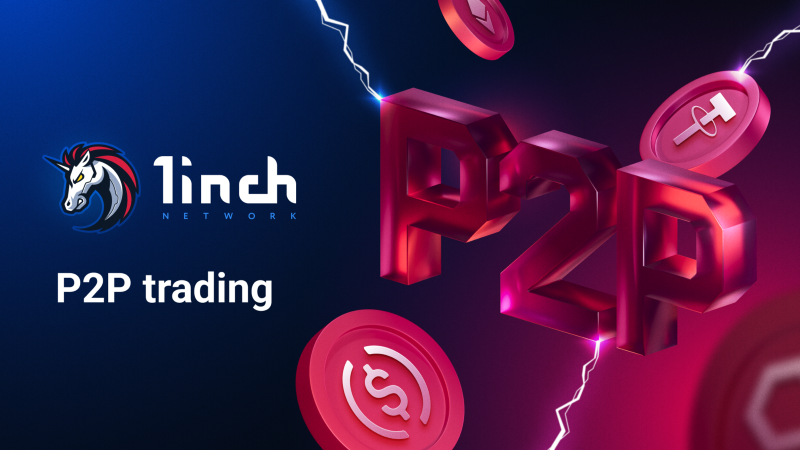P2P trading - what is it

In P2P trading, you find a counterparty for a crypto swap by yourself. Understanding the specifics of this type of trading will help you to use it profitably.
Key takeaways:
Peer-to-Peer trading mechanics explained
Peer-to-peer trading, commonly known as P2P trading, refers to an alternative way of buying and selling cryptocurrencies without a third party, with buyers and sellers interacting directly.
But when two people agree to exchange some digital assets, they need assurance of their trade’s security. After all, even if participants A and B know each other, there is no guarantee that B, after receiving funds from A, will immediately send them the agreed-upon amount in exchange. A P2P trading feature, which many platforms offer, helps two participants conduct a trade ensured by a smart contract, which eliminates chances of being cheated.
It works as follows. A user creates an order to swap coin X for coin Y at a specified rate and sends it to another participant who must confirm the order, after which the trade will be completed.
Advantages of P2P trading:
Numerous use cases
P2P trading gives users an opportunity to safely trade at a truly desirable rate, regardless of whether it’s entirely out of market price or not. P2P offers more flexibility in certain cases. For example, a specific token may lack liquidity, and swapping it on an exchange could result in high slippage and losses.
P2P also comes in handy for purchasing NFTs, as well as for any deal that needs to be done in a secure fashion.
Low or zero fees
Since users transact with each other directly, fees are small or non-existent.
Arbitrage opportunities
Many traders use P2P for an arbitrage strategy — buying cryptocurrency at a lower rate in one place and then selling it elsewhere at a higher price.
Negative features compared to regular trading
Lower speed
P2P trading takes longer. Ideally, both participants in a trade must timely perform certain actions, but it doesn’t always work this way. Sometimes, one of the traders needs more time to confirm the deal, which causes the trade to be canceled or delayed. Therefore, the speed of such an exchange will always be lower than that of a regular trade executed in a fully automated mode. To speed up the trade, users can agree to complete it quickly and establish the tightest time parameters in the order.
Scammer activity
Often, malicious actors trick users into doing a trade outside the platform and transfering funds to some wallet.
Also, users should be careful to refrain from paying for duplicate orders. Scammers acting as counterparties can take advantage of a user’s negligence by asking them to confirm the same order. In addition, users should always double-check to make sure they enter the correct address of the counterparty.
P2P platforms
Peer-to-Peer trading opportunities differ from regular swaps and depend, among other things, on how they are implemented on a particular platform.
P2P marketplaces can be found on centralized platforms, where the entire peer-to-peer trading process resembles buying and selling items on eBay. Traders can choose a counterparty offering the best rate on needed assets or place their own order. Some platforms provide a system for ranking traders’ reliability according to reviews. In fact, the platform must be reliable in the first place since it ensures the safety of the trade.
For example, one user buys cryptocurrency from another for fiat, and after receiving the coins, contacts the bank and asks to cancel the payment. The platform has the power to prevent this type of fraud by reserving funds in the user’s wallet until the completion of the trade.
P2P trading platforms are frequently used for swaps in cryptocurrency/fiat pairs. Sometimes, platforms also struggle with low liquidity, which leads to extended trade settlement times and less favorable rates.
On the one hand, the marketplace concept fits those users who feel confident in a crowded online environment. On the other hand, the process sometimes has negative aspects, such as more sophisticated fraudulent behavior, which the platform cannot prevent.
For instance, scammers can place consecutive orders for identical amounts over short time periods, causing the victim to get confused about orders and pay for an extra one.
The safety aspects of P2P trading
On the one hand, the marketplace concept fits those users who feel confident in a crowded online environment. On the other hand, the process sometimes has negative aspects, such as more sophisticated fraudulent behavior, which the platform cannot prevent. For instance, scammers can place consecutive orders for identical amounts over short time periods, causing the victim to get confused about orders and pay for an extra one.
Also, users should be careful to refrain from paying for duplicate orders. Scammers acting as counterparties can take advantage of a user’s negligence by asking them to confirm the same order.
How to stay safe when P2P trading:
- Only trade with trusted counterparties. Check their reputation and reviews before making a trade.
- Never pay for duplicate orders.
- Double-check the address of the counterparty before making a payment.
Bottom line
P2P trading is a popular way to buy and sell cryptocurrencies offering a number of advantages.However, it is important to be aware of the risks associated with P2P trading, such as scams, low trading speed and user negligence. Despite the risks, it can be a safe and profitable type of trading cryptocurrencies.





























